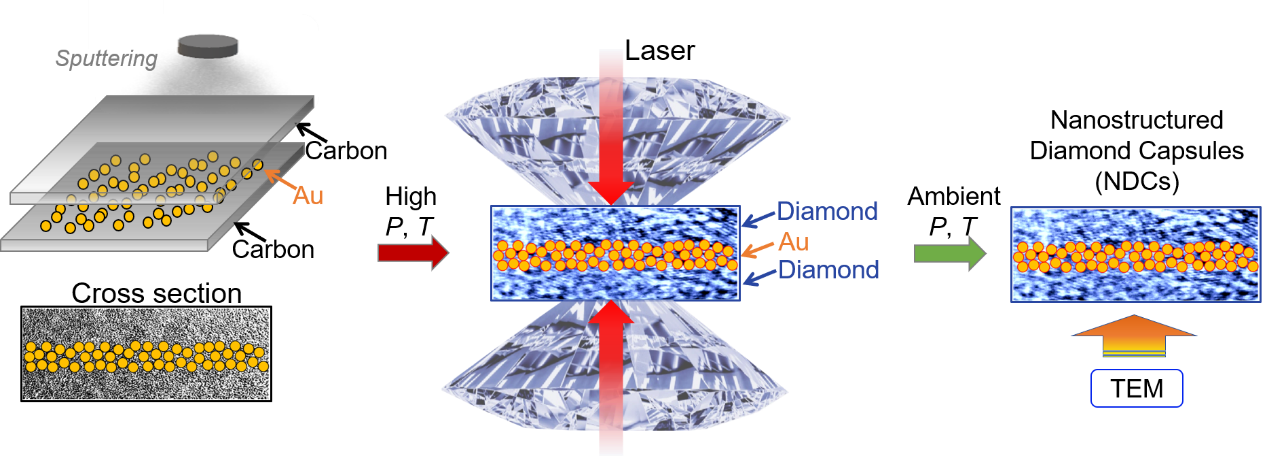
New research from a team of scientists led by Drs. Charles Zeng and Zhidan Zeng from HPSTAR has developed a novel thin-film strategy that enables long-term preservation and atomic-scale investigation of high-pressure materials,such as gold nanoparticles,under ambient conditions. Published in Nature Communications on July 1, 2025, this work represents a significant advancement in high-pressure materials science and opens the door to practical applications of exotic high-pressure phases.
High pressure can drastically modify the atomic and electronic structures of materials, giving rise to emergent properties that are inaccessible under ambient conditions. However, these changes typically revert once the pressure is released, severely limiting their utility and fundamental study.
To overcome this long-standing challenge, the research team developed a general encapsulation method using nanostructured diamond capsules (NDCs) formed through a thin-film sandwich architecture. The approach employs freestanding carbon–gold nanoparticle–carbon films as precursors, which are transformed into nanodiamond capsules via a controlled amorphous carbon-to-diamond transition. These capsules effectively trap and preserve the high-pressure gold nanoparticles, preserving their internal pressure even after release from the high-pressure environment.
“This is the first time we’ve been able to preserve high-pressure solids in a form suitable for in situ atomic-scale characterization using tools like transmission electron microscopy (TEM),” Dr. Zhidan Zeng said. “It bridges a fundamental gap in the field.”

Caption: Schematic of the synthesis process of NDCs encapsulating high-pressure solids using multilayer thin film deposition. This figure is from Figure 1 of the Nature Communications paper (https://doi.org/10.1038/s41467-025-61260-9).
High-resolution TEM and Raman spectroscopy confirmed the successful formation of the diamond capsules and the stable encapsulation of the high-pressure gold nanoparticles. Notably, the internal pressure retained within the nanoparticles is tunable, from 15.6 GPa to 26.2 GPa, as the synthesis pressure increases from 32.0 GPa to 56.0 GPa. The method also allows precise control over nanoparticle size and spatial distribution through thin-film engineering, which is vital for both fundamental research and technological applications.
“This work allows us to access detailed atomic-scale information on structure, strain, phase interfaces, and defects in high-pressure materials, which were previously difficult or impossible to obtain,” explained Dr. Qiaoshi Zeng. “Our novel strategy not only addresses a critical bottleneck in high-pressure research but also establishes a versatile platform for exploring pressure-induced phenomena across physics, chemistry, and materials science.”
This innovation builds upon the team’s previous NDC work focused on encapsulating high-pressure volatiles [Nature, 608, 513 (2022)], now extended into solid high-pressure materials. Critically, the technique, in principal, is compatible with existing industrial multilayer thin-film fabrication techniques, offering a clear route to scalable production and application of high-pressure solids in technologies operating under normal conditions.
高压环境下,材料往往会展现出常压下无法获得的新奇结构与特性。然而,这些高压诱导的状态一旦卸压便会迅速消失,极大限制了其研究与应用潜力。日前,北京高压科学研究中心的曾桥石研究员带领的研究团队在《自然×通讯》(Nature Communications)发表新成果,成功开发一种结合自支撑薄膜工程的“金刚石纳米高压舱”新策略,实现了固体材料高压态在常压下的可控保存与原子尺度研究。